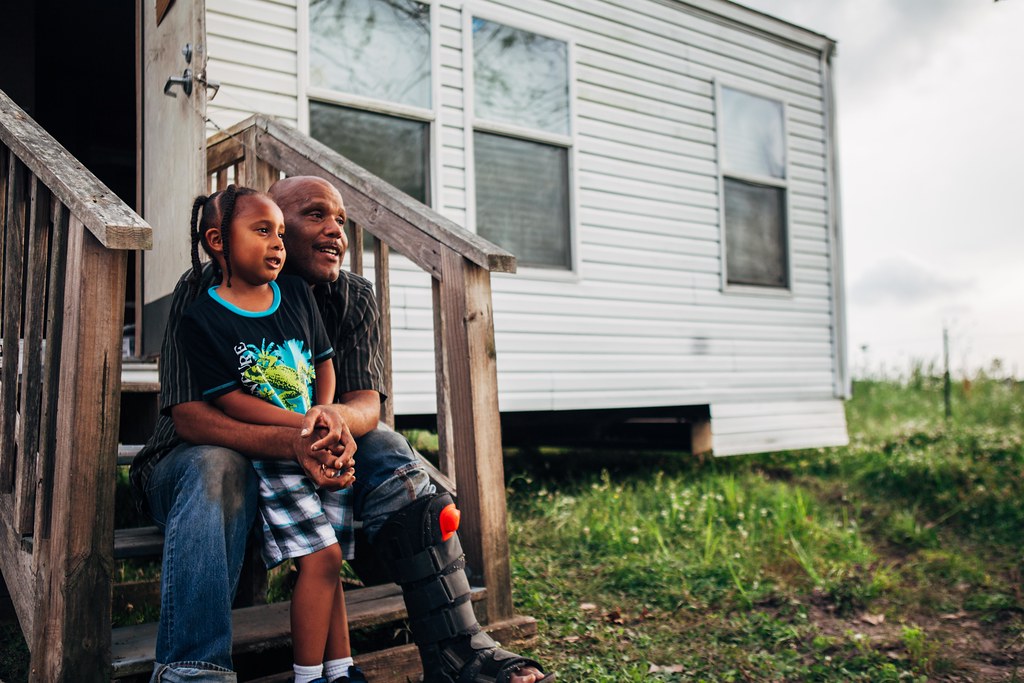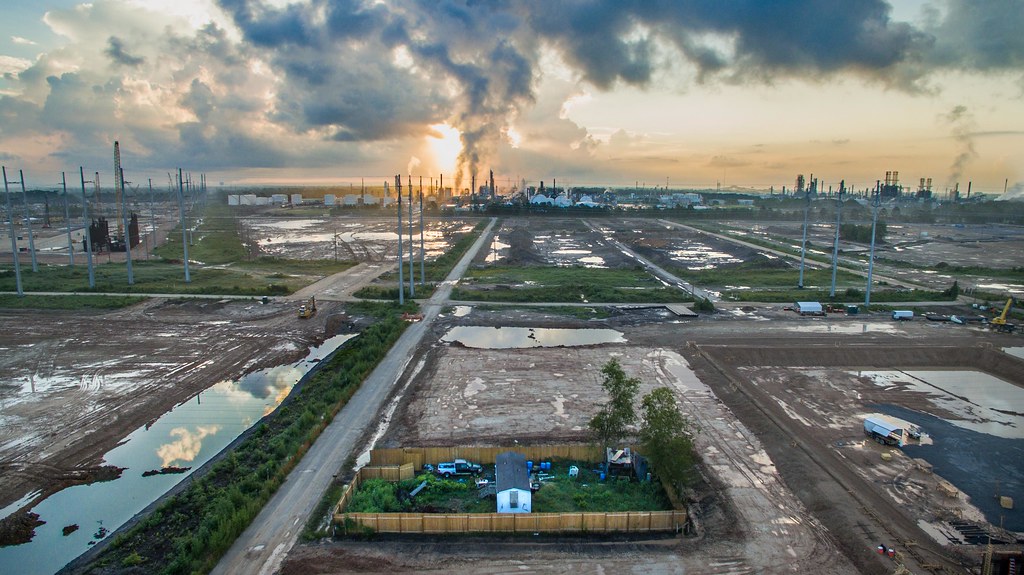As the pandemic’s unequal impact on people of color comes to light, Alexander Glustrom’s Mossville: When Great Trees Fall focuses on how industrial and so-called development projects disproportionately harm what political philosopher Frantz Fanon called “the wretched of the Earth.” The award-winning documentary paints a powerfully poignant portrait of environmental racism, as one man in a small rural Louisiana town confronts the consequences of what is essentially a takeover by a gigantic energy and chemical company,

A quote from poet Maya Angelou opens the 75-minute film, portentously followed by shots of Black gravediggers at a cemetery, then of an industrial complex at Mossville with smokestacks spewing fumes. Founded in 1790 by ex-slave Jack Moss years before slave-owning President Thomas Jefferson’s Louisiana Purchase, over time the unincorporated town near Lake Charles was settled by formerly enslaved people and at its peak grew to 8,000 inhabitants. This unique African American enclave provided a refuge from segregation and Jim Crow, evolving a singular history which now, according to Glustrom’s chronicle, faces extinction.
If the Black communities of Tulsa, Oklahoma and Rosewood, Florida were destroyed by race riots in the 1920’s, Mossville is being upended by the 14 petrochemical plants that have surrounded it following the Great Depression, bringing with them toxic emission and spills that have been making residents sick at unprecedented rates. Glustrom’s camera reveals the price being paid by the formerly Black and proud town, with aerial vistas revealing a deforested bleak moonscape where once, presumably, a village amidst flora thrived.
According to the documentary, the last nail in Mossville’s coffin, is the arrival of South African Synthetic Oil Limited (Sasol), a multi-billion dollar integrated energy and chemical firm that has operated a plant in the town since 2001, proposed as a $21.2 billion expansion project.
Mossville follows the struggles of a handful of the town’s residents who strive to survive as economic over-development overwhelms their homes and way of life as their once-thriving town turns into a fenceline community. Among them are lifelong resident Stacey Ryan, who has lost many relatives due to cancer suspected to be caused by the nearby industrial behemoths. He clings on to the past, refusing to leave his land and legacy by taking Sasol’s buyout offer.

All of Ryan’s neighbors eventually leave the town, but he refuses to budge, and ends up becoming the last man standing in Mossville. Encircled by the denuded landscape, cutoff from local utilities and plagued by health problems, the 49-year-old lives off-the-grid in a trailer on the patch of ground he owns and has fenced off from encroachments.
Although most scenes were lensed in Mossville, detailing the effects Sasol’s project is wreaking there, the narrative is intercut with sequences filmed on location in Secunda, a Black township in South Africa that was the site of two African National Congress attacks against Sasol in 1980 dramatized in the 2006 movie Catch a Fire. Sasol was formed in 1950 in the face of international ostracism due to South Africa’s apartheid regime. The company played a vital role in supplying the country’s energy needs.
Activist Samson Mokoena of the Vaal Environmental Justice Alliance injects internationalism into the documentary, stressing the “connectivity” of the anti-Sasol struggles of what he calls “disposable” people from Louisiana to Africa, whether they be dispossessed indigenous tribesmen or Mossville’s outcasts.
Glustrom screened Mossville at the Zamdela township, Sasolburg, and the Durban International Film Festival. “The US also has a long history of forced removals and mistreatment of indigenous and black communities, so I wasn’t surprised to see that connection between the two countries,” he told the South African news outlet City Press. “The dangerous environmental conditions that communities of color are disproportionately subjected to in both places are connected to the deep history of settler colonialism and white supremacism that the two countries share.… And it fits into the long history, dating back to slavery and colonialism, of white companies profiting off of the extraction of resources through cheap labor from non-white populations.”
In addition to having a pan-African perspective, Mossville is an example of the ongoing historic Black-Jewish alliance that expresses the solidarity of persecuted peoples. According to his personal website: “Glustrom grew up in inner city Atlanta, where he was greatly influenced by his grandparents, who were Jewish allies in the civil rights movement. Alex graduated in 2010 from Tulane University in New Orleans, where he studied… digital media.”
Critics of Glustrom’s toxic tale may protest that it is a one-sided, impassioned account only airing the concerns and grievances of Sasol’s opponents. However, in his City Press interview the director claimed: “We have repeatedly requested interviews [with Sasolrepresentatives] but have been denied each time,” and were subjected to “constant harassment by Sasol plant security,” including an FBI interrogation.
Glustrom is also Mossville’s cinematographer, and while most of its camerawork is straight forward, there is some poetic imagery. Nighttime shots show the 14 plant industrial facility with multiple smokestacks blowing their dubious brew into the atmosphere, illumined, as Stacey Ryan muses, “like a futuristic city.” There are also shots of uprooted trees, which metaphorically encapsulate the documentary’s theme of cultural heritage being upended, with petrochemicals pitted against a people’s patrimony. Those great trees falling in Mossville are made out of flesh and blood as well as bark.
Mossville, which won an honorable mention at the New Orleans Film Festival, is arguably the most important film about the Pelican State and energy industry since motion picture pioneer Robert Flaherty’s 1948 docudrama Louisiana Story. Although considering that the latter was commissioned by Standard Oil its perspective was a world apart, if connected by how energy production impacts human beings.
Watch Mossville on PBS Reel South
We don’t have a paywall because, as a nonprofit publication, our mission is to inform, educate and inspire action to protect our living world. Which is why we rely on readers like you for support. If you believe in the work we do, please consider making a tax-deductible year-end donation to our Green Journalism Fund.
Donate